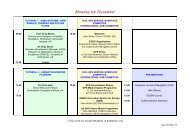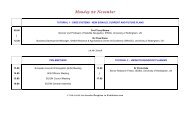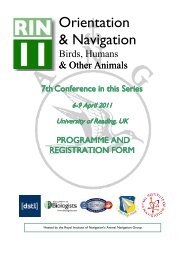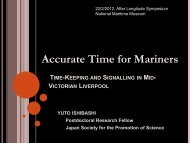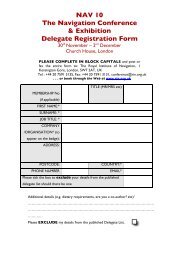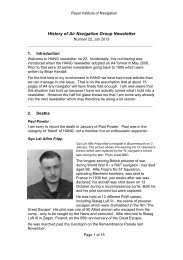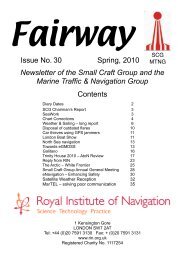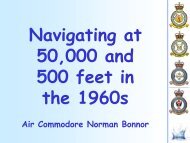HANG Newsletter - Royal Institute of Navigation
HANG Newsletter - Royal Institute of Navigation
HANG Newsletter - Royal Institute of Navigation
Create successful ePaper yourself
Turn your PDF publications into a flip-book with our unique Google optimized e-Paper software.
<strong>Royal</strong> <strong>Institute</strong> <strong>of</strong> <strong>Navigation</strong><br />
The first one is the compass from a V1. I feel this must be relatively rare<br />
because not only did it fly in the company <strong>of</strong> a ton <strong>of</strong> explosive but it was the<br />
first part <strong>of</strong> the V1 to arrive. The first photograph shows what was <strong>of</strong>fered for<br />
sale, at £195, and the second photograph taken from a service manual shows<br />
a compass in place in the V1 nose cone. It is one third <strong>of</strong> the V1 navigation<br />
system on the assumption that the V1 relied upon compass, altimeter and<br />
clock.<br />
Addison Luard calculator. Photo credit 1stjuly.<br />
This is the Addison Luard course and wind calculator <strong>of</strong> about 1935. The type<br />
B is for 3 vector calculations and type D for 4 vectors though I am not sure<br />
which model is on display here. I have seen it described as expensive and<br />
cumbersome but to me it is a work <strong>of</strong> art. Look at the mechanism –<br />
computation would be a pleasure but this one was expensive and sold for<br />
£119.<br />
P3 and P10 compass. Photo credit aspentree123.<br />
The final item is a P3 compass. The P series <strong>of</strong> compasses culminated in the<br />
P10 shown on the right; the P10 together with the P11 and P12 were the<br />
standard RAF compasses at the end <strong>of</strong> WW2. This family started with the P1<br />
<strong>of</strong> 1924 and the whole series looked very similar except for the P3 shown<br />
here looking like a hand held compass. It was the only P series compass with<br />
a vertical card and viewed from the side. This attempt to break the mould<br />
cannot have been successful because the design reverted to the familiar grid<br />
compass viewed from above as in the P10. This P3 was a small bit <strong>of</strong><br />
unrecognised history at £67.<br />
Page 15 <strong>of</strong> 16




